Finishing up the blog series on level boarding, this post looks at the current state and future solutions regarding level boarding at the 7 Deep Tube lines on the London Underground. These lines are: Victoria, Jubilee, Northern, Piccadilly, Central, Bakerloo, and Waterloo & City (W&C). To see the introduction to this blog series, please refer to this post.
The Deep Tube lines are fundamentally different from their sub-surface counterparts, which were discussed in the previous post, primarily in terms of the size of their trains. In order to avoid ripping up entire streets to build the underground sections, as was done with the shallow sub-surface lines, these lines were built deep underground through Central London. To minimise the costs of expensive tunnelling, it was decided to reduce the diameter of the tunnels, resulting in trains with a much smaller profile compared to sub-surface trains as well as mainline trains. Unfortunately, this does make these lines inherently slightly less accessible, as there is less room to move about inside the train.
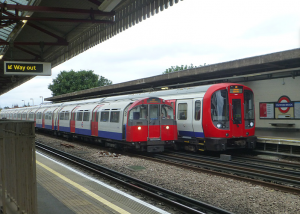
Size of Deep Tube train (left) versus sub-surface (right) (source)
Like the sub-surface lines, the Deep Tube lines have standardised rolling stocks, or train fleets, for each of the 7 lines. Since there is virtually no track-sharing among these lines, they are able to have a total of 6 types of rolling stock, with the Central and W&C lines sharing the same type. Rolling stock on the Deep Tube lines is named according to the year in which it was meant to enter service. From newest to oldest, we have: 2009 stock (Victoria), 1996 stock (Jubilee), 1995 stock (Northern), 1992 stock (Central and W&C), 1973 stock (Piccadilly), and 1972 stock (Bakerloo).
2009 stock (top) and 1972 stock (bottom). Notice the more open layout of the 2009 stock train (with wheelchair bay), compared to the less accessible and non-refurbished 1972 stock (click images for source)
Unfortunately, despite having trains with a lower train floor than normal, a majority of platforms, particularly below-ground ones in Central London, are still a step below the train floors. The only exceptions are at new stations where there is level boarding (Jubilee line extension) or at some above-ground stations where platform height is more variable and even be higher than the train floor.
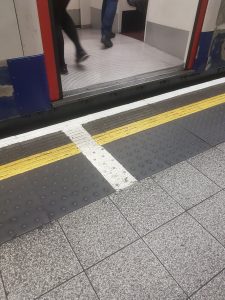
Typical unaltered low platform at below-ground station (Oxford Circus)
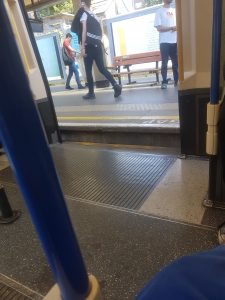
High platform at above-ground station (Acton Town)
What this means is that level boarding on the Deep Tube lines is currently forced to rely heavily on platform humps to minimise the step between the train and platform. As with sub-surface lines, however, the gap formed due to curved platforms has thus far not been addressed.
The rolling stock on a particular line is currently the most important factor in determining where platform humps can be installed. This is because trains need to fulfill certain accessibility criteria, dictated by the Rail Vehicle Accessibility (Non-Interoperable Rail System) Regulations (RVAR), such as wheelchair spaces in order for TfL to justify adding platform humps to enable level boarding where possible. This divides the 7 lines into two groups, where the Victoria, Jubilee, Northern, Piccadilly, and W&C lines have some degree of platform hump provision, but the Central and Bakerloo lines do not. And so, I will briefly go through each line and the current state of level boarding.
Victoria Line
The Victoria line is by far the best line in terms of level boarding, with 15 of its 16 stations having platform humps, despite many of these stations not having step-free access to the street. The remaining station is Pimlico, which is the only station on the line without an interchange, and is apparently not planned to be made step-free. The still quite new 2009 stock trains have dedicated wheelchair spaces and the fact that all the stations were built with straight platforms means that gaps are minimised. And so, any future step-free access project will include level boarding.
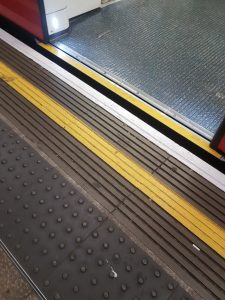
Level boarding on the Victoria line (Highbury & Islington)
Jubilee Line
The Jubilee line, made up of 3 distinct segments from different time periods, has a off-balanced approach. Its rolling stock, 1996 stock, has partial RVAR compliance, with multi-purpose spaces that are currently in the process of being converted to fully compliant wheelchair spaces. The newest section of the line, from Stratford to Westminster, was built with accessibility in mind and features level boarding and step-free access throughout the whole platform. The middle section, built in the 70’s from Green Park to Baker Street, provides level boarding via platform hump, with two of these stations offering step-free access. This means that the newer section need signs indicating where these platform humps are located so that passengers can alight at the correct part of the train. Finally, in the oldest and mostly above-ground section past Baker Street to Stanmore, Wembley Park and Kingsbury offer full level boarding while Stanmore and Kilburn require ramps.
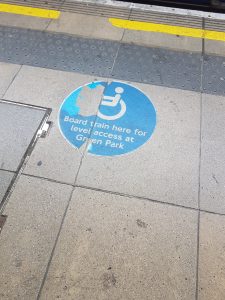
Sign at Stratford indicating platform hump location at Green Park
Since part of this section used to be run by the Metropolitan line, platform heights are particularly messy and variable. While the platforms were already relatively level at Wembley Park and Kingsbury, at Kilburn the platforms are signficantly higher than the train floor, which leads us to a major issue that will keep haunting TfL. What do you do if platforms are too high? Putting in a platform “dip” seems highly dangerous and raising the railway itself would be very expensive and shut down part of the line for the duration of the works.
Nevertheless, TfL has thus far opted to leave Kilburn as ramp-only, though this will be harder to ignore as more and more stations with this problem become step-free. Finally, Stanmore has one new platform with level boarding and two without, and there really isnt a clear explanation why platform humps are not used.
Northern Line
The Northern line, similar to the Victoria line, has a consistently high degree of level boarding at its step-free stations. Almost exclusively using platform humps, every single step-free station and interchange-only station has level boarding, except Golders Green. Somewhat miraculously, Golders Green is so far the only step-free station on the line that has curved platforms. Unlike the sub-surface lines, where there are some stations with level floors but with variable gaps due to curved platforms, TfL is explicitly not adding platform humps at Golders Green because they cannot guarantee completely unassisted boarding, at least without some sort of retractable gap filler.
This is another major issue that limits the provision of level boarding, as TfL cannot justify raising platforms if the gap will be too large, and it has not begun actively trialing any sort of gap filler on the network. The line’s 1995 stock trains are almost identical to those on the Jubilee line, except that they already underwent RVAR-compliant refurbishment in 2016. Overall, I do expect for the currently planned future step-free stations, such as Moorgate, Bank, and Colindale, to feature level boarding, given the straight platforms at these stations.
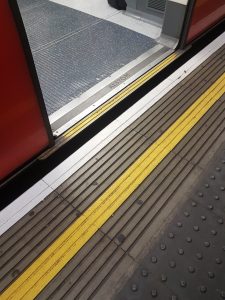
Level boarding on the Northern line (Euston)
Piccadilly Line
The Piccadilly line is where things begin to get more complicated, given that high platforms, curved platforms, as well as track-sharing with sub-surface lines are prominent at the step-free stations on the western branches of the line. Interestingly, despite being now 45 years old, the 1973 stock does comply with some accessibility regulations as it was heavily refurbished in 2001.
East of Hammersmith and west of Hounslow East, every step-free station so far has level boarding, primarily via platform humps. On the rest of the line, where sub-surface trains still run or used to run, there are 7 step-free stations that require ramps. 5 of these, Uxbridge, Hillingdon, Ruislip, Acton Town, and Hammersmith, have platforms above the train floor to accommodate for the sub-surface line S stock trains that share the same track or platform.
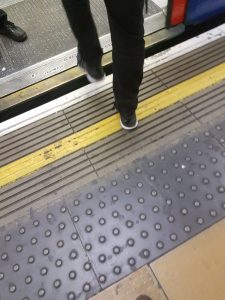
Level Boarding on the Piccadilly line (Green Park)
The remaining 2 stations, which are now exclusive to the Piccadilly line and are above-ground, are Sudbury Town and Hounslow East. Sudbury Town is particularly strange, as the platforms start out a few inches above the train floor at one end and gradually decrease such that at the northermost train door on both platforms, there is actually level boarding. However, since platform humps on this line are located further down the train, there is no level boarding for wheelchair users.
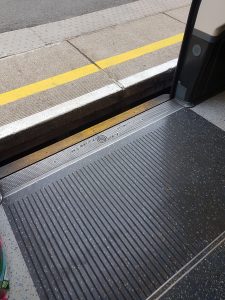
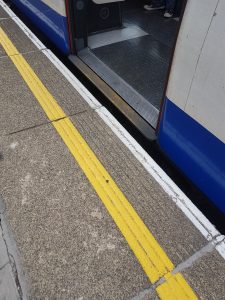
High platform on southern end and level platform at northern end at Sudbury Town
Finally, similar to Golders Green, Hounslow East has slightly curved platforms which likely impede the installation of platform humps. These issues will only become more apparent as the Mayor’s suburban station step-free access plan starts delivering step-free stations. This scheme, as outlined in this post, heavily favours above-ground stations in the Piccadilly and Central lines, many of which have high platforms. As these stations become step-free, such as Osterley, Park Royal, and even below-ground Knightsbridge, people may start to wonder why a station with one type of rolling stock that just underwent significant work to become step-free is still not independently accessible. Hopefully this added pressure will lead TfL to make the necessary track and platform adjustments to allow level boarding.
Central and W&C Lines
The Central and W&C lines share the same 1992 stock trains, which unlike the ones I have covered so far, are not RVAR-compliant to any appreciable extent, offering no space for a wheelchair outside of the door areas. Despite this, and probably because there are only two stations and because trains get very full at peak time, the W&C line actually does have platform humps. This means that once the works at Waterloo and Bank are finished, the small line will offer full step-free access.
Unfortunately, the Central line receives a considerably worse deal. Out of 13 stations with some degree of step-free access, only half of one (Stratford westbound platform) has level boarding. This is only because a new platform was built when Stratford was expanded due to the Jubilee line extension. For all other stations, ramps are required, regardless of whether the platforms are straight, or whether they are located above or below the train floor.
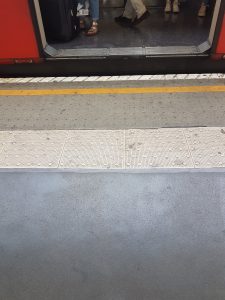
Usual state of boarding on the Central Line’s step-free stations (Stratford)
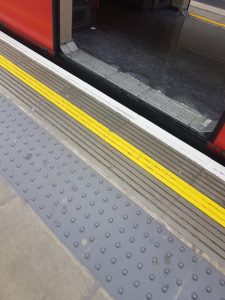
Very rare example of level boarding at Stratford westbound platform
This is most likely due to the inaccessibility of the 1992 stock, and this lack of level boarding was brought to light recently when the Central line got its first step-free stations in Central London at Bond Street and Tottenham Court Road. While the Jubilee and Northern line platforms got platform humps at these stations, the ones on the Central line were initially left with nothing, since the platforms were at first deemed too narrow even for regular ramps. The matter reached the media when BBC’s Ellis Palmer released a brilliantly-done video highlighting the situation and TfL was eventually forced to make specially-designed ramps for the stations. It is also important to note that when the step-free Tottenham Court Road first opened, TfL did indeed try to install a platform hump, but then took it down because of the large gap it left.
If you notice carefully, all of the accessible types of Deep Tube rolling stock have a small metal plate sticking out of the train body to slightly minimise the gap, which the 1992 stock, as well as 1972 stock, does not have.
Fortunately, these trains are now set to be refurbished starting next year, which will make them more RVAR-compliant and possibly allow the installation of platform humps. Finally, similar to the Piccadilly line, several current and future step-free stations have high platforms, meaning that platform humps will not fix these issues and considerable work will be needed to ensure level boarding across the line.
Bakerloo Line
We have now come to the runt of the litter: the Bakerloo line. Given the line’s old and inaccessible 1972 stock trains and its appalling provision of step-free access, with a grand total of 2 step-free stations and 2 interchange-only stations, it may seem pointless to talk about any provision of level boarding. Needless to say, there is currently no level boarding anywhere on the line. Even with an accessible rolling stock, the fact that the Bakerloo line shares roughly half of its length with the Overground means that level boarding on this section will not be possible as long as both services continue to run, given the difference in train sizes. Fortunately, not all hope is lost for this line. As on the Central line, the Bakerloo line’s aging 1972 stock will be refurbished starting next year, with wheelchair bays added to the entire fleet by November 2020. This will allow for platform humps to be added at Oxford Circus and Baker Street, benefiting important cross-platform interchanges there, as well at the future step-free Paddington platforms.
New Tube for London
For all these lines, except the Victoria line, the common theme is that comprehensive work will be needed to modify platform heights and minimise gaps if level boarding is to become commonplace after all existing rolling stock are made accessible. One major incentive for this type of work will be the upcoming and long-awaited introduction of a new uniform rolling stock for the Piccadilly, Central, Bakerloo, and W&C lines, currently called the New Tube for London (NTfL). With their introduction spanning from 2023 to 2034 starting with the Piccadilly line, the new Siemens trains will completely replace the 1972, 1973, and 1992 stock trains. In 2014, Siemens released the following conceptual video of these trains as part of their bid:
Something interesting about this video is how it shows the Platform-Train Interface (PTI) at Caledonian Road and King’s Cross St Pancras, where the entire platform is level with the train floor and even includes platform-edge doors (PED’s). Currently, both stations feature platform humps. Although the recent press releases from Siemens no longer mention PED’s, TfL’s website states that they will be installed at some point in the future and also explicitly states that the “the gap between platform and train will be eradicated.” All of this seems to suggest that TfL may be forced to undergo a lengthy and expensive project to make platforms level everywhere except where there is track-sharing with larger trains. A recent TfL paper on the future of the Piccadilly line says:
“Localised platform modifications will be carried out at ‘Step Free’ stations on the Piccadilly line to provide level access to the new trains at Rail Vehicle Accessibility Regulations-designated doorway positions.”
In terms of the gap, there seems to be two promising solutions. First, the new trains will be made of a larger number of smaller carriages. For example, if this 2014 article is correct about the length of the new carriages, the Piccadilly line will use 10-carriage trains that will be 6 metres longer than the current 6-carriage ones. Increasing the number of carriages evens out the gap size along curved platforms, and can even allow the train to be wider to “eradicate” the now-smooth gap.
Comparison of 1973 stock and NTfL. Notice how on a curved platform, NTfL has fewer gap variations, allowing for a wider body design
In addition to this, work has been done looking at gap fillers for the most problematic curves, with trials reported in a 2014 NTfL feasibility study using mechanical gap fillers.
And so, it appears that TfL more or less has a viable medium-term solution for level boarding on its most problematic Deep Tube lines. The one major issue is the timescale. By 2022, 40% of the London Underground is supposed to be accessible. Many stations, however, will remain ramp-only without further intervention from TfL. My hope is that some of the work will start sooner than the introduction of the new trains, in order to keep up with the rise of step-free stations.
I realise that every post in this series has been very long and complex, given the very complicated topic. And so, to give it a proper conclusion, the next post will summarise the current state of level boarding in London as well as highlight the need for an effective and concerted effort to hold rail bosses accountable to ensure that our modernising railway network is accessible to everyone.
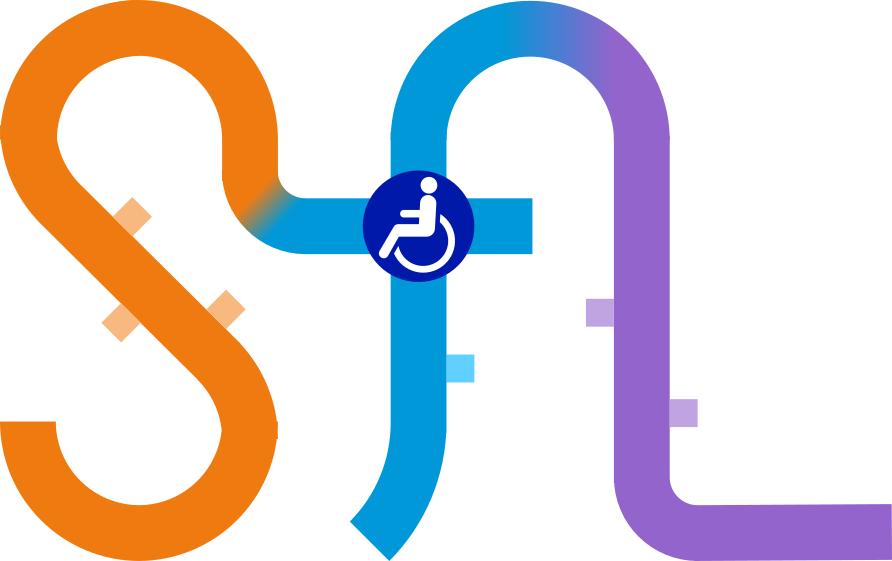
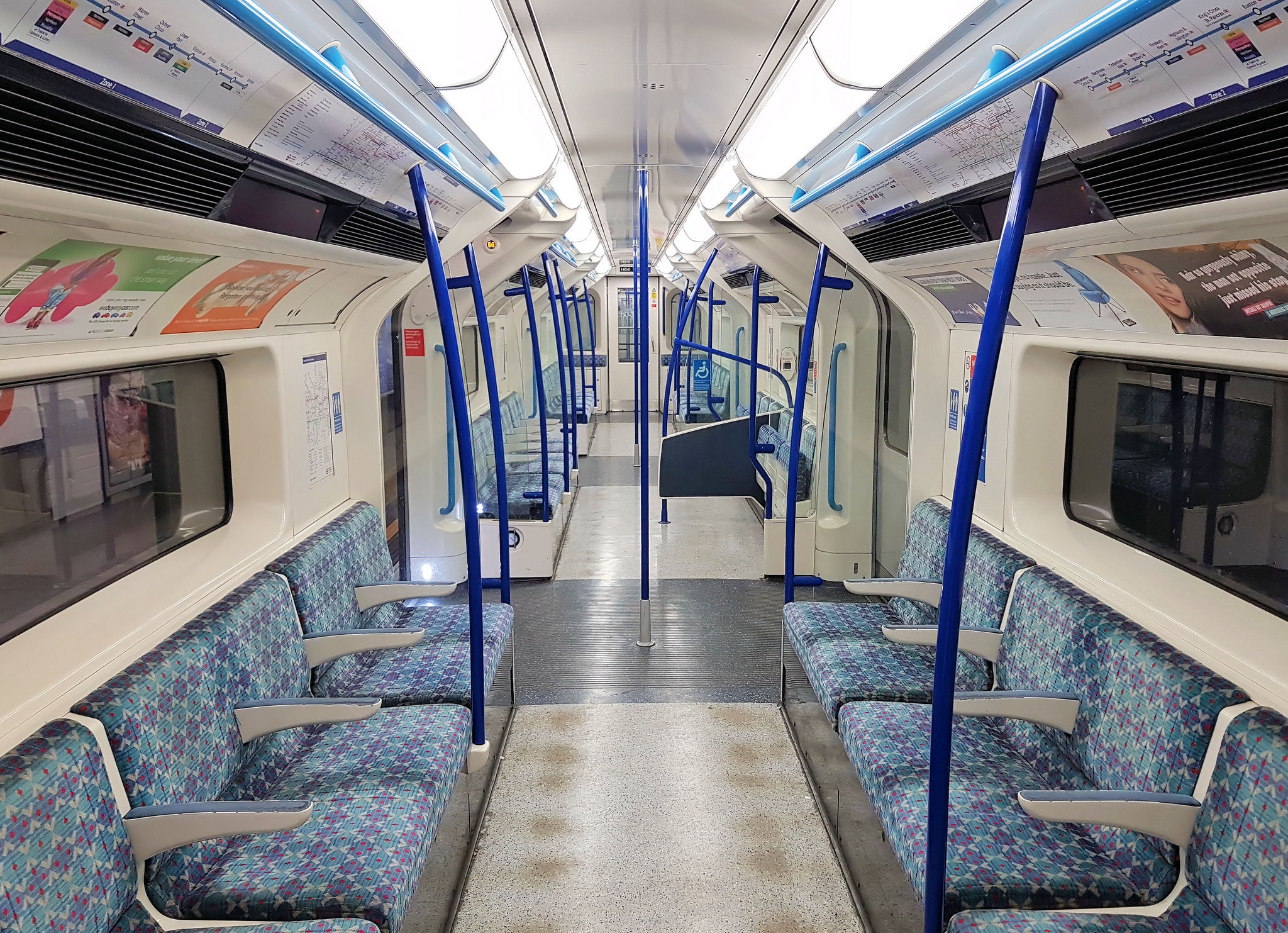
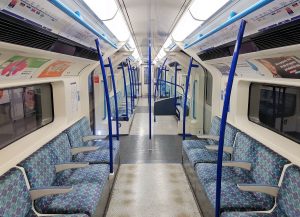
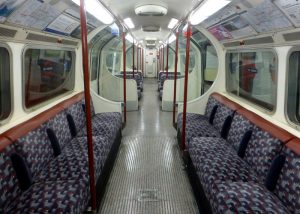
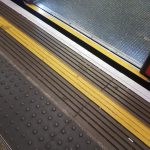
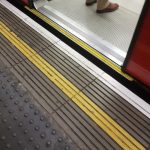
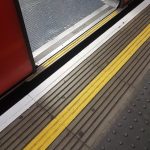
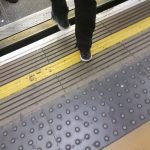
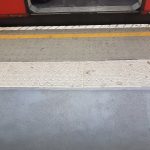
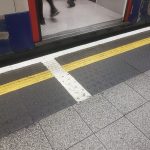
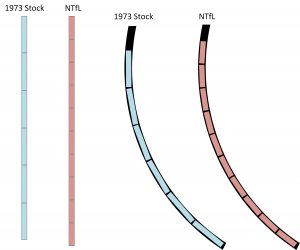
1 comment